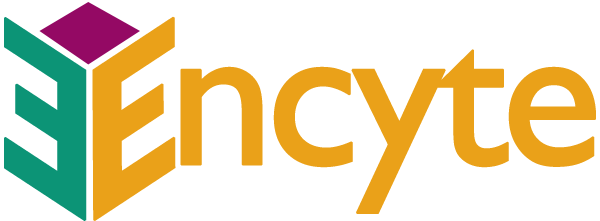FREQUENTLY ASKED QUESTIONS

Q:What is sustainable development and how is it achieved?
- Sustainable development has been defined as development that meets the needs of the present without compromising the ability of future generations to meet their own needs.
- Sustainable development calls for concerted efforts towards building an inclusive, sustainable and resilient future for people and the planet.
- For sustainable development to be achieved, it is crucial to harmonise three core elements: economic growth, social inclusion and environmental protection. These elements are interconnected and crucial for the well–being of individuals and societies.
- Eradicating poverty in all its forms and dimensions is an indispensable requirement for sustainable development. To this end, there must be promotion of sustainable, inclusive and equitable economic growth, creating greater opportunities for all, reducing inequalities, raising basic standards of living, fostering equitable social development and inclusion, and promoting integrated and sustainable management of natural resources and ecosystems.
Q:What is “The 2030 Agenda for Sustainable Development”?
- The 193 Member States of the United Nations reached consensus on the outcome document of a new sustainable development agenda entitled, “Transforming our World: The 2030 Agenda for Sustainable Development”. This agenda contains 17 goals and 169 targets. The outcome document is available at: https://sustainabledevelopment.un.org/post2015/transformingourworld .
- World leaders will officially adopt this universal, integrated and transformative agenda to spur actions that will end poverty and build a more sustainable world by 2030.
- This agenda builds on the achievements of the Millennium Development Goals (MDGs), which were adopted in 2000 and guided development action for the 5 years that followed. The MDGs have proven that global goals can lift millions out of poverty.
Q:What are the Sustainable Development Goals (SDGs)?
- The 17 new SDGs make up the ambitious, bold sustainable development agenda that will focus on the three interconnected elements of sustainable development: economic growth, social inclusion and environmental protection.
- The Sustainable Development Goals (SDGs) and targets are global in nature and universally applicable, considering different national realities, capacities and levels of development and respecting national policies and priorities. They are not independent from each other—they need to be implemented in an integrated manner. The complete list of goals and targets are available at: https://sdgs.un.org/goals
- The SDGs are the result of a three–year–long transparent, participatory process inclusive of all stakeholders and people’s voices. They represent an unprecedented agreement around sustainable development priorities among 193 Member States. They have received world–wide support from civil society, business, parliamentarians and other actors.
Q:How were the Sustainable Development Goals developed?
- The Millennium Development Goals that were launched in 2000, set 2015 as the target year. Recognising the success of the Goals – and the fact that a new development agenda was needed beyond 2015 – countries agreed in 2012 at Rio+20, the UN Conference on Sustainable Development, to establish an Open Working Group to develop a set of sustainable development goals for consideration and appropriate action.
- After more than a year of negotiations, the Open Working Group presented its recommendation for the 17 Sustainable Development Goals.
- In early August 2015, the 193 member states of the United Nations reached consensus on the outcome document of the new agenda “Transforming our World: The 2030 Agenda for Sustainable Development”.
- Member States decided that the UN summit for the adoption of new sustainable development agenda with its 17 goals will be held from 25 to 27 September 2015, in New York and convened as a high–level plenary meeting of the General Assembly.
Q:What are the elements underpinning the Sustainable Development Goals?
- People, as we are determined to end poverty and hunger, in all their forms and dimensions, and to ensure that all human beings can fulfil their potential with dignity, equality and in a healthy environment.
- Planet, to protect the planet from degradation, including through sustainable consumption and production, sustainably managing its natural resources and taking urgent action on climate change, so that it can support the needs of the present and future generations.
- Prosperity, to ensure that all human beings can enjoy prosperous and fulfilling lives and that economic, social and technological progress occurs in harmony with nature.
- Peace, to foster peaceful, just and inclusive societies free from fear and violence. There can be no sustainable development without peace and no peace without sustainable development.
- Partnership, to mobilise the means required to implement this agenda through a revitalised global partnership for sustainable development. A partnership based on the spirit of strengthened global solidarity with a particular focus on the needs of the poorest and most vulnerable. This requires the participation of all countries, all stakeholders and all people.
Q:Why are the Sustainable Development Goals so broad in comparison to the Millennium Development Goals which were very specific?
- There are 17 sustainable development goals with 169 targets, in contrast to the 8 Millennium Development Goals with 21 targets. The complex challenges that exist in the world today demand that a wide range of issues be covered. It is, also, critical to address the root causes of the problems and not only the symptoms.
- The Sustainable Development Goals are the result of a negotiation process that involved the 193 UN Member States and also saw unprecedented participation of civil society and other stakeholders. This led to the representation of a wide range of interests and perspectives. On the other hand, the MDGs were produced by a group of experts behind closed doors.
- The SDGs are broad in scope because they will address the interconnected elements of sustainable development: economic growth, social inclusion and environmental protection. The MDGs focused primarily on the social agenda.
- The MDGs targeted developing countries, particularly the poorest, while the Sustainable Development Goals will apply to the entire world, developed and developing countries.
Q:How are the SDGs different from the MDGs?
- The 17 Sustainable Development Goals with 169 targets are broader in scope and will go further than the MDGs by addressing the root causes of poverty and the universal need for development that works for all people. These goals will cover the three dimensions of sustainable development: economic growth, social inclusion and environmental protection.
- Building on the success and momentum of the MDGs, the new global goals will cover more ground with ambitions to address inequalities, economic growth, decent jobs, cities and human settlements, industrialisation, energy, climate change, sustainable consumption and production, peace and justice.
- The new goals are universal and apply to all countries, whereas the MDGs were intended for action in developing countries only.
- A core feature of the SDGs has been the means of implementation – the mobilisation of financial resources – as well as capacity–building and the transfer of environmentally sound technologies.
- The new goals recognise that tackling climate change is essential for sustainable development and poverty eradication. SDG 13 aims to promote urgent action to combat climate change and its impacts.
Q:Aren’t 17 SDGs and 169 targets too many, too ambiguous and unrealistic?
- Poverty eradication, shared prosperity and planetary sustainability cannot be reduced to a simple formula.
- The SDGs represent the shared global goals and targets that will be tailored at the country level, informed by context–based evidence.
Q:Is sustainable development an environmental agenda?
No, sustainable development is not just limited to the environment and offers a much broader scope covering a multitude of social, economic, political and legal spheres.
FAQs ABOUT THE SUSTAINABLE DEVELOPMENT COUNCIL OF SRI LANKA (SDC)
Q:What is the composition of the SDC?
The Council consists of the following members:
- The ex-officio members.
- The Secretary to the President.
- The Secretary to the Ministry of the Minister, assigned to the subject of Sustainable Development.
- The Secretary to the Ministry of the Minister, assigned to the subject of National Planning or his nominee.
- The Secretary to the Ministry of the Minister, assigned to the subject of Environment or his Nominee.
- Eight other members, appointed by the President.






